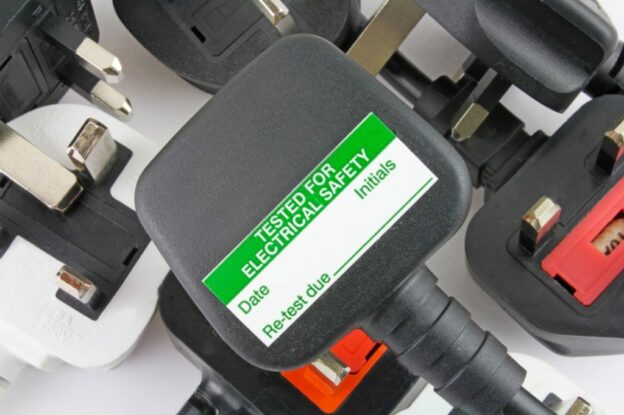Electricity is a major cause of accidental fires in UK homes, with over 20,000 each year. Did you know that nine out of 10 (89%) electrical fires are caused by electrical products?
In the worst-case scenarios, people have lost their lives, whilst others are left seriously injured. Many of these electrical fires can be avoided if people conduct relevant safety practices.
What this shocking statistic tells you is that there has been a deterioration of safety practices over time; more reason why PAT testing needs to be done competently to ensure the safety of everyone in the property, and guarantee that you are not liable for any electrical damage.
Why Is PAT Testing Important?
In the UK, the process of PAT testing is incredibly important because of the influx of cheap appliances imported from all over the world. Many of these devices have been found to be lacking in quality and should be tested before use in your rental properties.
From 2018 to 2019, there were over 10,000 electrical fires due to domestic appliances, and more than 300 injuries as a result. Over 25% of electrical fires were due to faulty appliances during that period.
PAT tests are essential to ensure the safety of any electrical appliances and to ensure that these safety standards are being maintained.
There’s no legal requirement to carry out the tests specifically however UK legislation states that landlords must keep all electrical equipment in a SAFE condition. The best way to check they are safe is by carrying out a PAT test.
Is PAT Testing Worth It?
Short answer, yes. It is the surest way to guarantee that you are compliant with your electrical safety obligations as a landlord, indemnify yourself against risk of penalties for non-compliance, and protect your tenants from potential hazards.
Portable Appliance Testing will confirm that your appliances are safe for your tenants to use, guaranteeing their safety and protecting you from any claims for damages as a result of unsafe electrical equipment.
As a landlord, we’re certain that you want your tenants to have the best possible experience during their tenancy, and this is one small measure you can take to ensure that you are providing good quality, safe housing.
What Needs PAT Testing?
Well, what needs PAT Testing has changed massively over the last few years. In 2020, the COP (IET Code of Practice) removed equipment mobility classifications (i.e. portable, fixed, stationary etc) with the intention that ALL equipment comes under this guidance regardless of how ‘portable’ it is.
In simple terms, all references to ‘PAT’ have been removed and the code has now grown to include other appliances including some stationary items.
There are several categories of electrical equipment that should undergo PAT testing:
- Fixed appliances – These are electrical items that are fixed in a permanent location or fastened to a support.
- Stationary appliances – Appliances that are stationary and are not moved, such as white goods in a kitchen.
- IT equipment – This is an item that is used for any IT purpose. Examples include computers, laptops, printers, etc.
- Moveable or portable appliances – Equipment that usually stays in one place but can be moved with relative ease.
- Cables, wires, and chargers – Any cable, wire, lead, or charger that connects to an electronic item or plugs into a wall.
- Other handheld devices – Electric items that are held in the hand, such as electric tools and hairdryers.
So Why is PAT Testing Necessary?
The primary reason to conduct a PAT test is for safety. PAT tests are important to uphold safety standards of electrical appliances in your properties.
Remember, it’s important to be safe rather than sorry. With an ever-increasing number of counterfeit electrical products in the market today, it is vital to ensure your electrical products are legitimate and safe.
A PAT test should be conducted after any new purchase of electrical products and then in regular intervals afterward to check for deterioration and uphold safety standards.
What is our PAT Testing Procedure at NSI?
- The plug of the appliance is inserted into a specialist machine, and a current is passed through to carry out the test.
- The appliance will have a sticker applied with a specific number relating to that device. The sticker is either a pass or fail.
- Any minor failures (plug, fuses etc) will be replaced free of charge.
- Major failures will be highlighted immediately. The reasons will be noted in the report.
Following the test, you will receive an inventory, which lists every tested appliance and assigns a “sticker” number to them. A PAT test cannot be deemed complete without this inventory.
How much does a PAT test cost?
We offer PAT testing for residential properties from just £90.
As a landlord, you want to make sure your property is safe and has the necessary certification. We offer a SAFE Certified package, which combines three amazing services (including PAT Testing) in just one appointment, with savings of over £100 per property, to find out more click here.
If you would like to book an engineer for Portable Appliance Testing, please click the button below.
